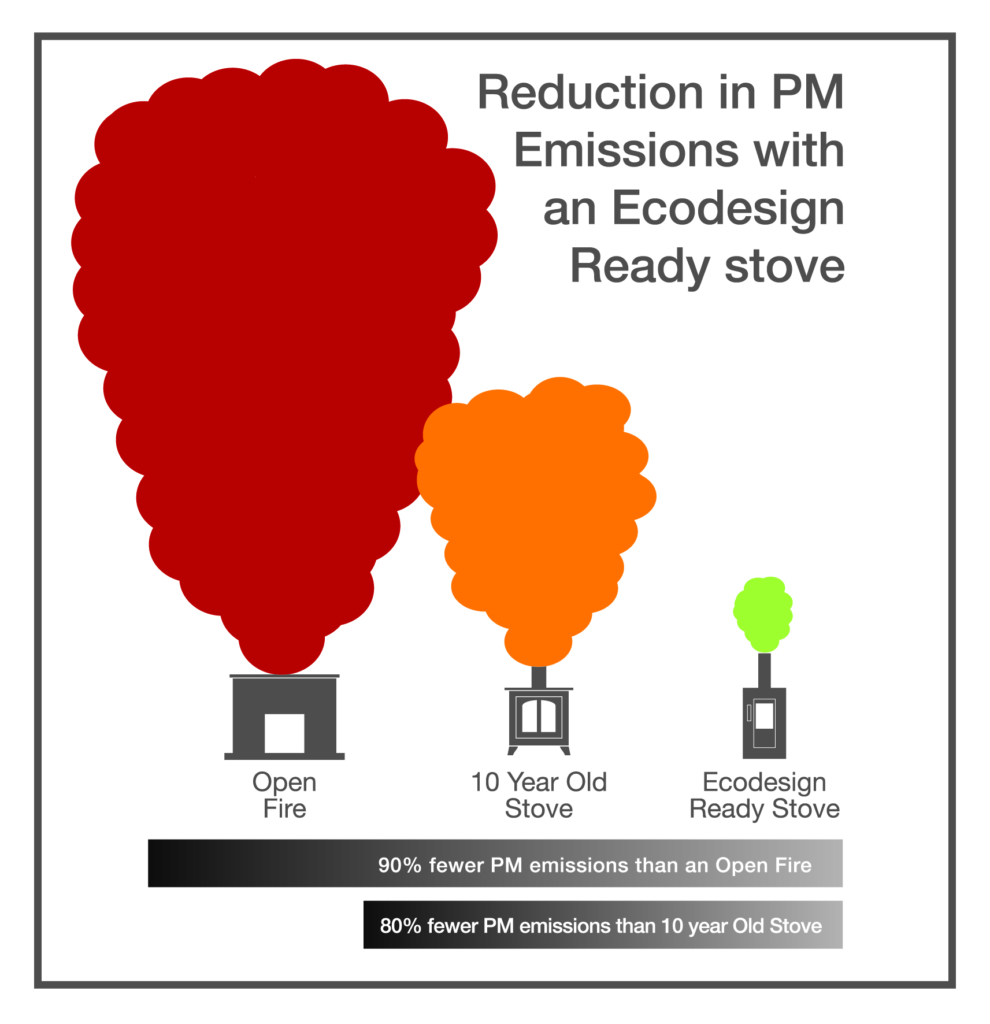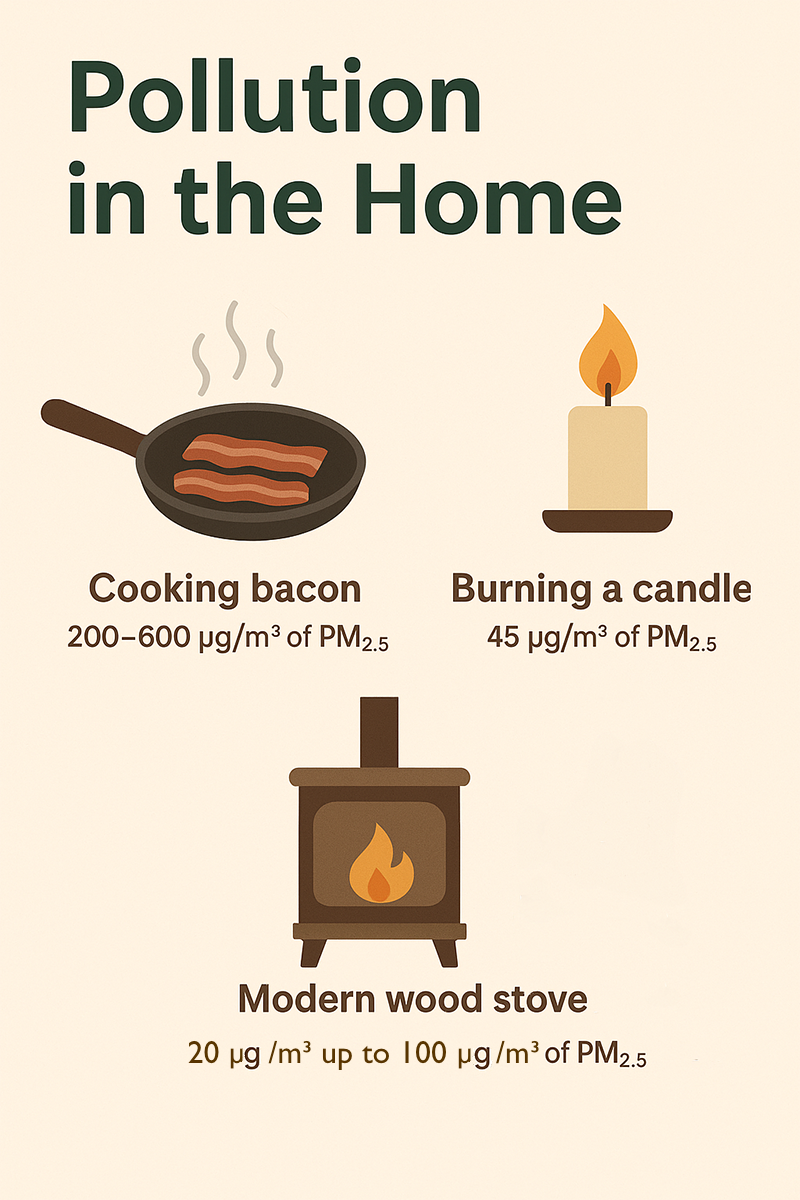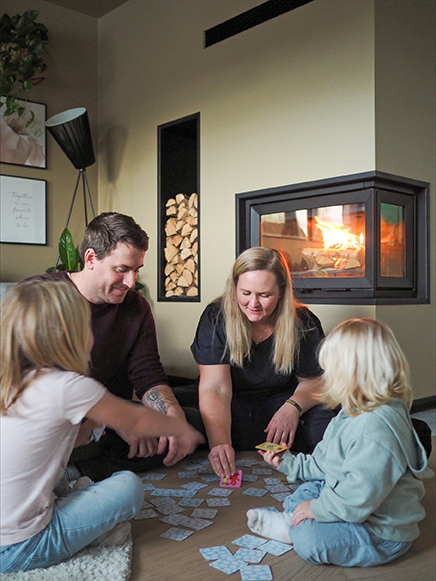Are stoves bad for our health or the environment?
This question has been on many people’s minds lately, with wood stoves and their impact on the environment and our health often making the headlines. But with so much conflicting information out there, it’s easy to wonder — are stoves really bad for us?
Fire has been at the heart of our homes since the beginning of humankind. It’s something almost primal, a source of warmth, comfort, and connection. Yet, with so many reports and opinions circulating, it’s important to separate fact from fiction. So, let’s take a closer look and break it down clearly.
Wood Stoves: Cleaner, Greener, and Better for Our Wellbeing
For many people, the phrase “wood stove” still brings to mind smoky chimneys and outdated heating. But today’s certified stoves are a world away from the inefficient models of the past. Thanks to stricter emissions standards, smarter design, and sustainably sourced fuel, modern wood stoves can offer an environmentally responsible way to heat our homes and even boost our well-being along the way.
Cleaner, More Efficient Heating
Modern Ecodesign-certified stoves produce up to 90% fewer emissions than open fires and use less than a third of the fuel for the same amount of heat (Stove Industry Association, 2024). Independent schemes like ClearSkies go a step further by testing for both efficiency and emissions, helping ensure that today’s stoves are genuinely cleaner and more efficient than older models.
A Renewable, Low-Carbon Fuel
When wood is sourced from sustainably managed woodland, it’s considered a renewable, low-carbon fuel. The carbon released during burning is offset by new growth, a natural part of the carbon cycle. Buying wood from local suppliers can also reduce the emissions associated with long-distance transport compared with oil or gas (SIA, 2024).



The Hidden Polluters at Home
Wood stoves often get the blame for indoor air pollution, but many everyday habits are far greater culprits. For example:
-
Candles and incense release soot and volatile organic compounds.
-
Old vacuum cleaners leak fine dust and use more power.
-
Boilers that aren’t serviced regularly waste fuel and emit unnecessary pollutants.
-
Poor insulation lets heat escape, cancelling out any efficiency gains.
-
Cooking, especially frying, can release surprisingly high levels of particulates — frying bacon can spike PM2.5 levels to 200–600 µg/m³, while a properly operated stove stays below 20 µg/m³.
In other words, when used correctly, a modern wood stove is often not the biggest polluter in your home.
Firelight and Wellbeing
The comfort of sitting by a fire runs deep in our biology. Research shows that watching and listening to a crackling fire can have measurable effects on both body and mind.
-
Physiological relaxation: Studies by Lynn et al. (2014) and later Clark, Landgraf & Lynn (2024) found that viewing a fire lowers blood pressure and heart rate, triggering a natural relaxation response.
-
Emotional benefits: In Sweden, researchers found that people value fireplaces for stress relief, emotional regulation, and the simple pleasure of ambience (Karlsson et al., 2020).
-
Health outcomes: Bates et al. (2025) reported that households using cleaner-burning stoves in Malawi had lower average blood pressure compared with those using older models.
Taken together, the research suggests that firelight offers more than warmth — it can help calm the mind and promote a sense of wellbeing.
Using Stoves Responsibly
To get the best from a wood stove while minimising emissions, proper use and maintenance are key:
-
Burn only seasoned, dry wood.
-
Choose an Ecodesign-compliant stove.
-
Keep your chimney and stove regularly serviced.
-
Follow local smoke-control rules.
In Summary
Modern wood stoves are often misunderstood. Far from being relics of the past, they represent a cleaner, more sustainable form of home heating when used responsibly. They not only offer renewable warmth but also contribute to a sense of comfort and wellbeing that few other heat sources can match. With a balanced, evidence-based view, wood stoves can be appreciated as both efficient and emotionally enriching parts of home life.
Refrances
-
Bates, M.N., Flitz, G., Rylance, S., et al., 2025. Association of a cleaner-burning stove with blood pressure in adults in rural Malawi. PLOS ONE.
-
Karlsson, B.S.A., et al., 2020. Light my fire but don’t choke on the smoke: Well-being and pollution from fireplace use in Sweden. Energy Research & Social Science, 70.
-
Lynn, C.D., et al., 2014. Hearth and campfire influences on arterial blood pressure: Defraying the costs of the social brain through fireside relaxation. Evolutionary Psychology, 12(5).
-
Clark, L., Landgraf, L., & Lynn, C.D., 2024. The influence of domestic fire on blood pressure and heart rate: A replication study. Preprint, ResearchGate.
-
Stove Industry Association, 2024. Socioeconomic and well-being benefits of stove ownership and use. [Online] Available at: https://stoveindustryassociation.org/
For Help or Advice About Any of Our
Wood Stoves
Call Us: 01326 572878
Quality, Personalised Service
If you choose a Wendron Stoves engineer to install your stove then you have the confidence that he is HETAS qualified. As such, his work is guaranteed and safe.
Specialist Advice
We have worked in the stove industry for over 30 years, so we like to think we have intimate knowledge of our industry.
So when you come to us for help, you can be assured that we will give you the highest quality advice together with superb customer service.

